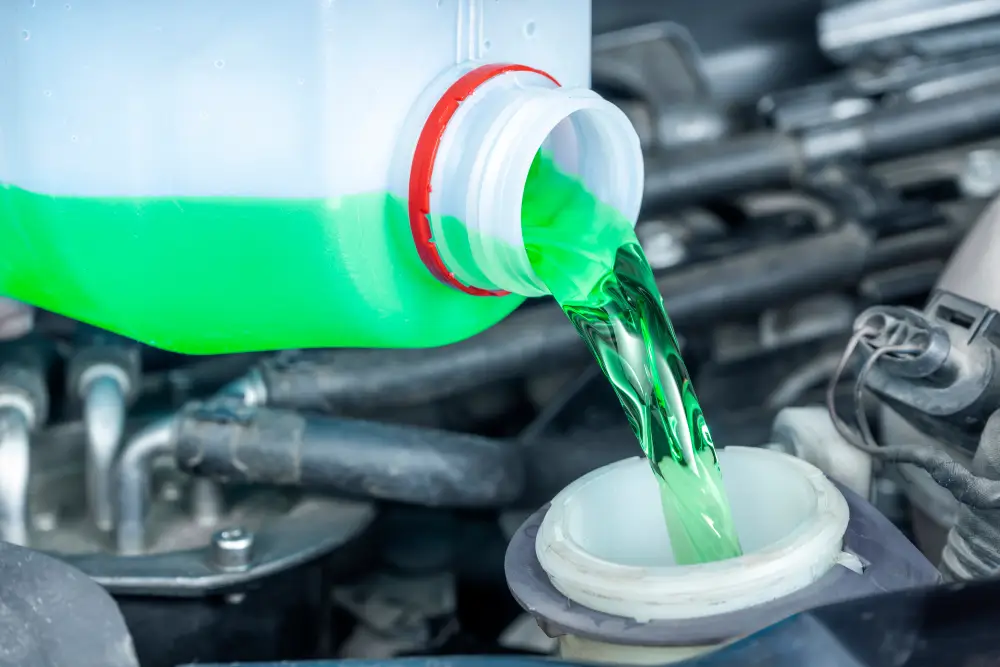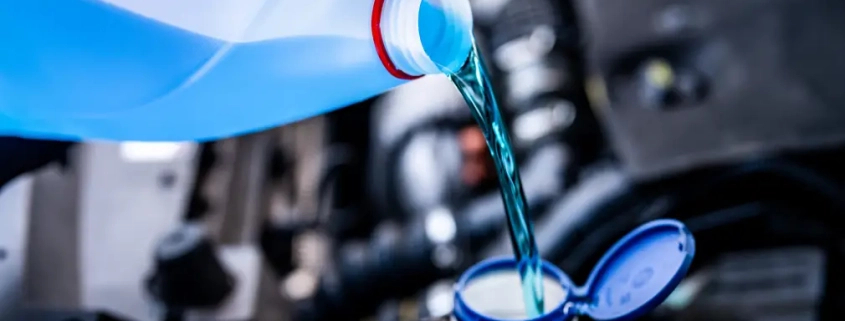How to clean a car cooling system
A clean and well-maintained cooling system is essential for keeping your car’s engine running at optimal temperature. Over time, rust and debris can build up in the cooling system, reducing efficiency and potentially leading to costly repairs. Regular cleaning helps prevent overheating, corrosion, and blockages that could damage your radiator and other engine components.
In this guide, our Natrad cooling specialists will cover everything you need to know about how to clean a cooling system properly, including step-by-step instructions and tips to ensure your car stays in top condition.
Why cleaning your car’s cooling system is important
Your car’s cooling system plays a crucial role in regulating engine temperature. If your system is not properly maintained and contaminants such as rust and scale build up, they can restrict coolant flow, reduce heat dissipation, and even cause overheating.
Cleaning your cooling system ensures:
- Better engine performance
- Prevention of overheating and costly repairs
- Improved efficiency of your radiator and water pump
- A longer lifespan for cooling system components
Now, let’s get into how to clean a cooling system correctly.

How to clean a car cooling system step by step
Cleaning your car’s cooling system helps maintain optimal engine performance and prevents overheating. By following these steps, you can ensure your radiator, hoses, and coolant passages remain free from harmful buildup.
1. Gather your supplies
Before starting, ensure you have the right tools and materials, including:
- A coolant system flush solution
- Distilled water
- New coolant (as recommended by your car manufacturer)
- A drain pan
- Safety gloves and goggles
- A wrench or screwdriver (to remove the radiator cap and drain plug)
- A funnel
2. Let the engine cool down
Never attempt to clean a cooling system while the engine is hot. When heated, the coolant is under pressure, and opening the radiator cap can cause burns. Allow the engine to cool completely before proceeding.
3. Drain the old coolant
Draining the coolant helps remove old fluid along with any built-up contaminants that may have accumulated over time.
- Place a drain pan under the radiator drain plug.
- Turn the cabin heater on full to allow coolant in the heater to drain.
- Open the radiator cap to release pressure.
- Loosen the drain plug and allow the coolant to fully drain.
- Dispose of the old coolant properly, as it could be toxic to the environment.
4. Perform a coolant flush
To remove rust and debris from the cooling system:
- Close the drain plug.
- Following the product instructions, pour the cooling system flush solution into the car’s radiator.
- Add distilled water until the engine’s radiator is full.
- Start the engine and let it run for about 10–15 minutes with the heater on to circulate the flush solution.
- Turn off the engine and let it cool completely or for the time advised in the instructions.
- If necessary, drain the system again and repeat the flushing process with clean water.
5. Remove stubborn contaminants
Over time, contaminants like rust and oil can build up in the cooling system, reducing its efficiency and potentially leading to overheating or blockages.
How to clean rust out of the cooling system
If your radiator has rust build-up, a specialised rust remover or radiator flush with anti-rust properties can help break it down. For severe rust issues, you may need to repeat the flushing process multiple times.
How to clean oil out of the cooling system
Oil contamination in the cooling system is a sign of a serious issue, often a failed head gasket. If you notice oil in your coolant, a degreaser or a professional cooling system cleaner may be needed. There could also be coolant mixed into your engine oil, which can cause damage. However, it’s best to have a mechanic inspect the system to diagnose and fix the underlying cause.
6. Fill with fresh coolant
Properly refilling your cooling system ensures optimal engine temperature regulation and prevents overheating.
- Close the drain plug.
- Use a funnel to pour in the new coolant.
- Check your vehicle’s manual for the correct coolant-to-water ratio.
- Start the engine and let it run for a few minutes to circulate the coolant.
- Check for leaks and top up if necessary.

How often should you clean your cooling system?
Auto clubs, like RACV, recommend flushing your cooling system every 40,000 to 80,000 km or at least every two to three years. However, if you notice signs of overheating, rust-coloured coolant, or oil contamination, it’s best to clean the system sooner.
Book a cooling system service with Natrad today and experience the difference for yourself. Many of our customers have benefited from a cooling system clean, allowing them to drive safer vehicles that have performed smoothly for longer.
Common signs your cooling system needs cleaning
Recognising the warning signs early can help prevent costly repairs and breakdowns. If you notice any of the following symptoms, it may be time for a system flush.
- The engine temperature gauge runs hotter than normal
- Rusty or dirty coolant
- Low coolant levels without an obvious leak
- Visible debris in the radiator
- Overheating issues
FAQs
How do I know if my cooling system needs flushing?
If your coolant appears dirty or rust-coloured, your engine is overheating, or there are visible deposits in the radiator, it’s time for a flush. Regular maintenance can help prevent these issues before they lead to serious engine damage. If in doubt, have a professional inspect your cooling system for any hidden problems.
Can I use tap water to flush my cooling system?
Tap water contains minerals that can cause scaling and deposits in the cooling system, reducing its efficiency over time. Using distilled water helps prevent mineral buildup and ensures the longevity of your radiator and engine components. Always follow your car manufacturer’s recommendations for the best results.
Can I clean my cooling system myself, or should I go to a professional?
While DIY cleaning is possible, professional radiator servicing ensures a thorough flush and inspection of your cooling system components. A professional service is recommended if you’re unsure or dealing with oil contamination.
Natrad’s experienced technicians use advanced equipment to fully clean and improve your cooling system, ensuring it operates at peak efficiency. With nationwide service locations and specialist advice, Natrad helps achieve a clean cooling system that you can rely on.
Why should I choose Natrad for a cooling system clean?
Natrad is Australia’s leading radiator and cooling system specialist, with over 40 years of experience servicing all vehicle makes and models. Our technicians use industry-leading diagnostic tools and high-quality coolant flush solutions to ensure your engine runs at peak efficiency.
With nationwide service centres and a commitment to customer satisfaction, we provide professional cooling system cleaning tailored to your vehicle’s specific needs. Choosing Natrad means getting expert service, high-quality flush treatments, and convenient nationwide locations, all backed by industry partnerships and manufacturer recommendations.
Keep your cooling system in peak condition with Natrad
Regular cooling system maintenance is crucial for keeping your engine running smoothly. If your cooling system needs professional flushing, Natrad’s expert technicians can help. We offer comprehensive radiator servicing, cooling system repairs, and air conditioning maintenance to keep your car performing at its best.
Book a cooling system service with Natrad today and ensure your vehicle stays cool under any condition.









